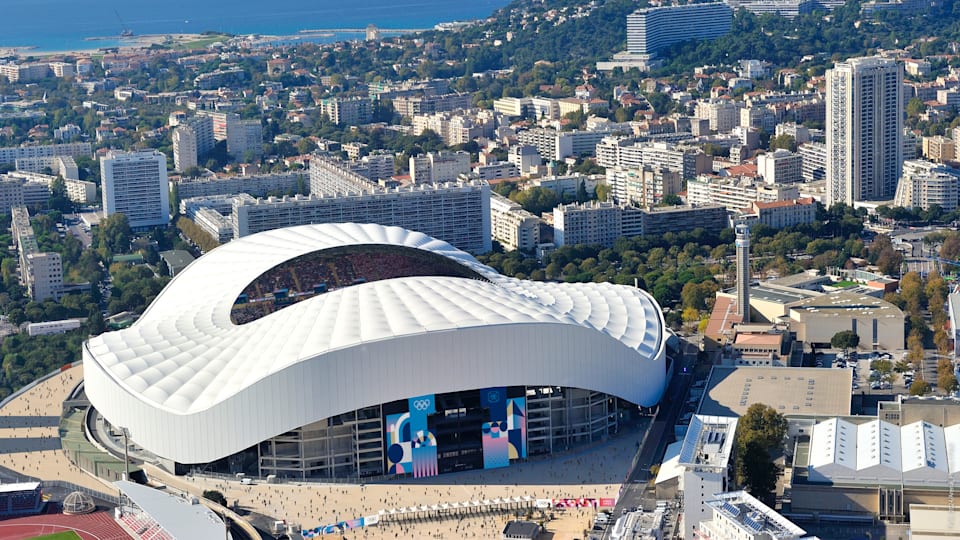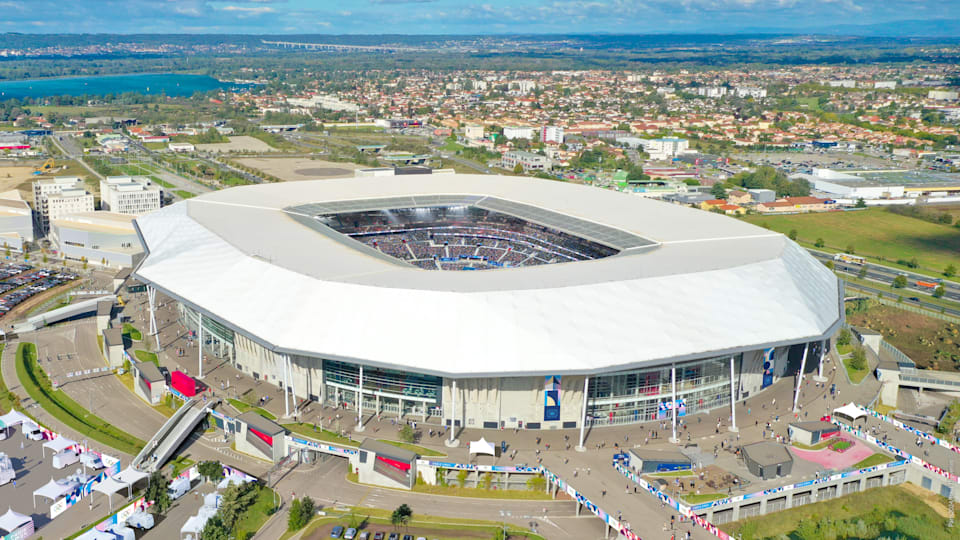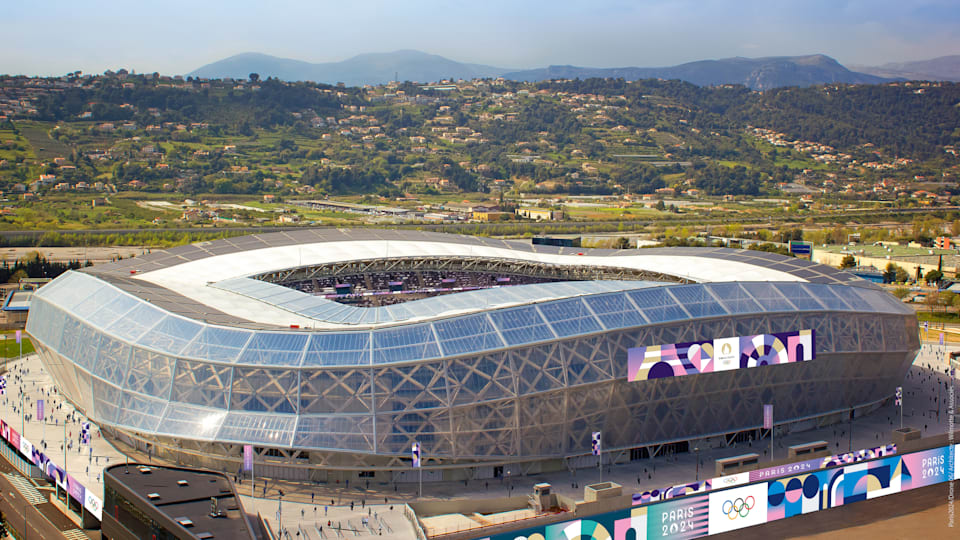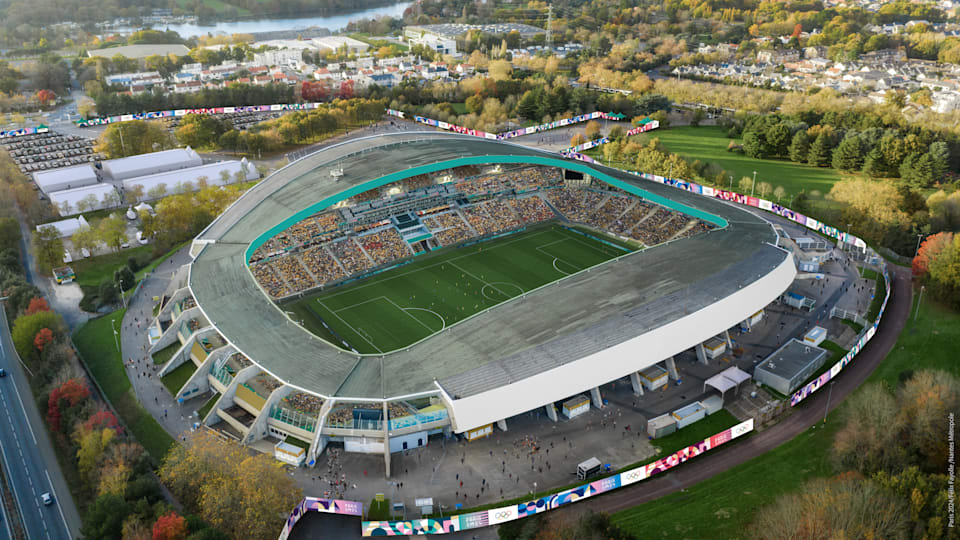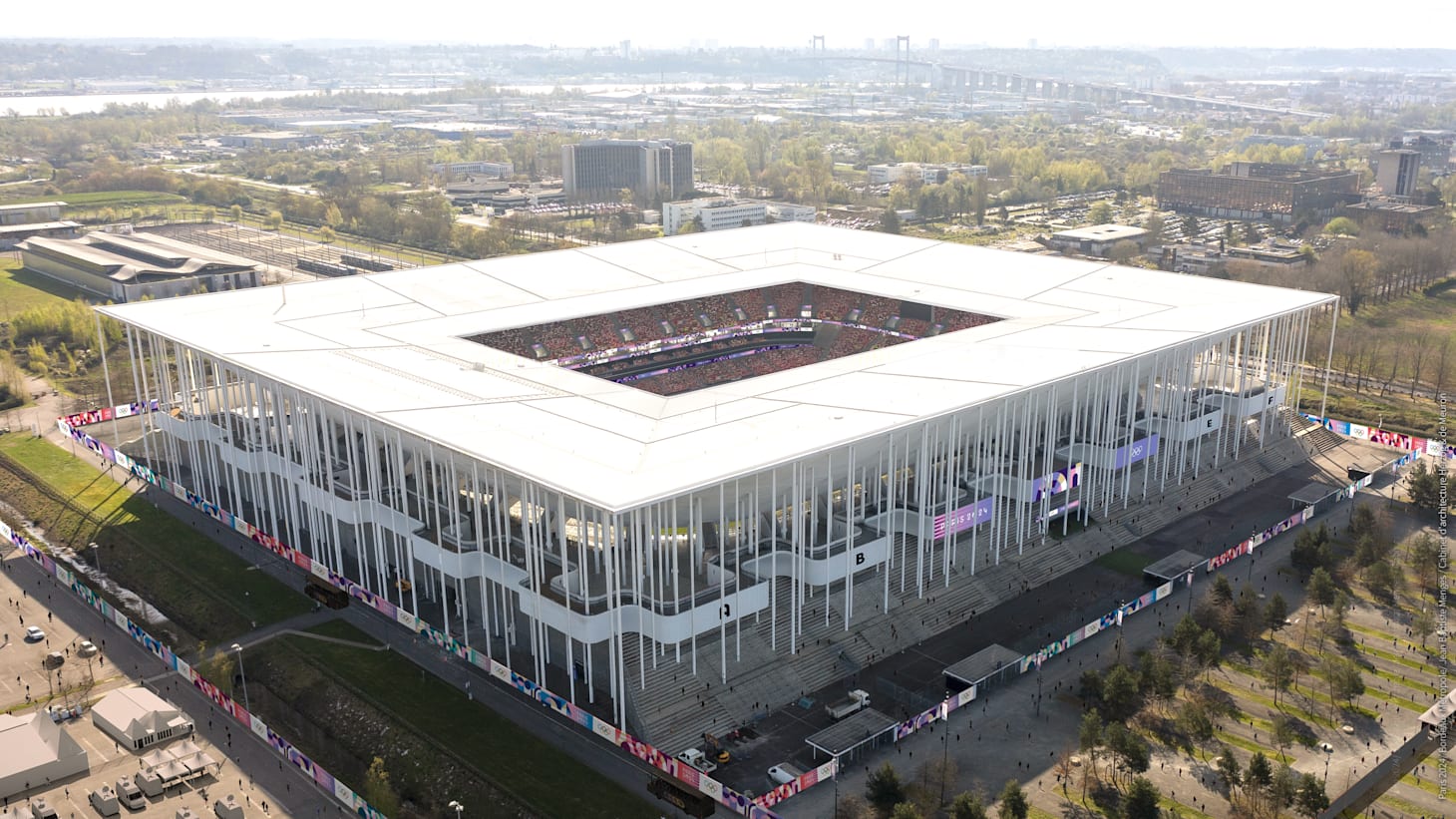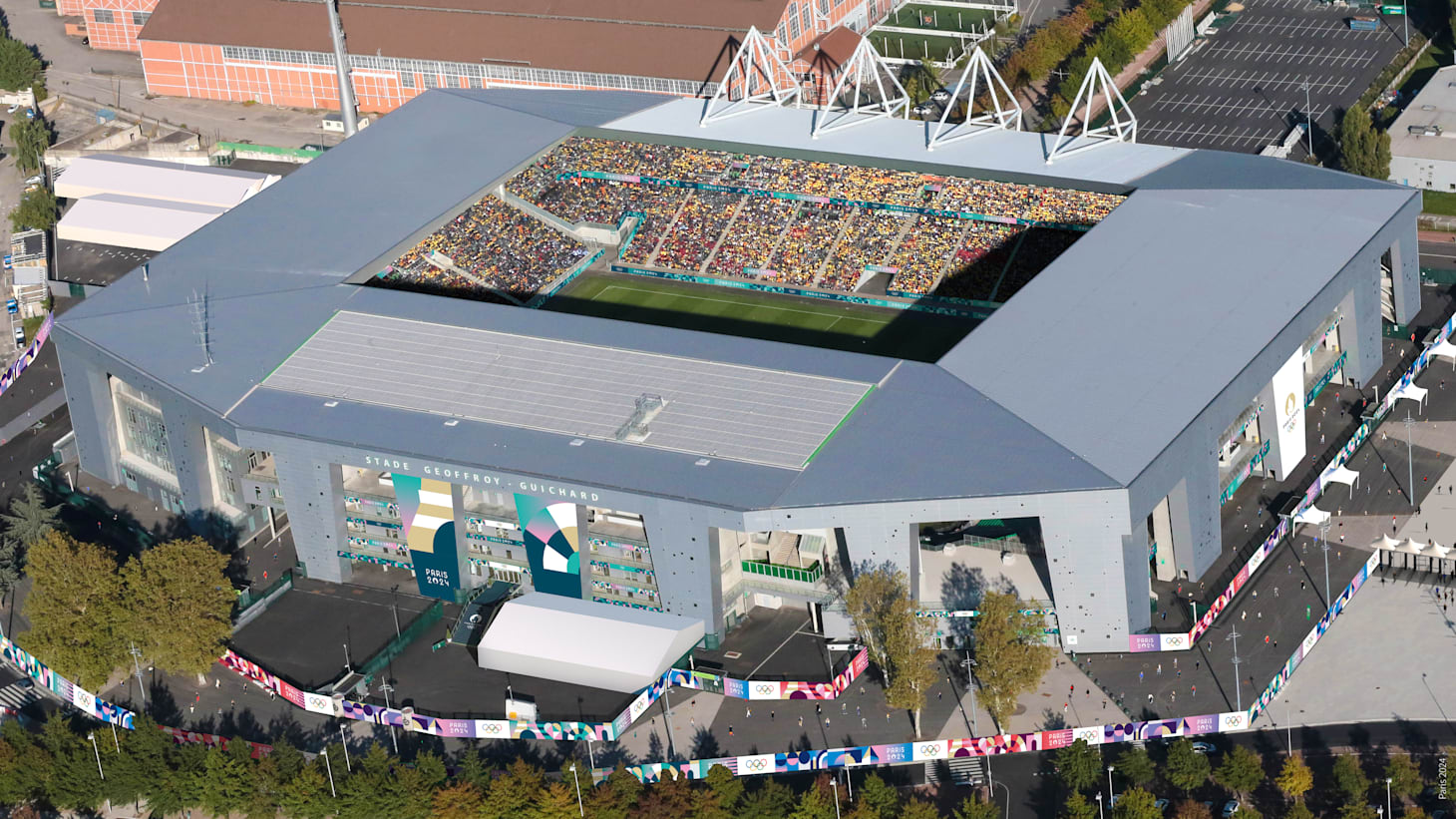
With the Paris 2024 Olympics about to start, it’s time to familiarise ourselves with the venues hosting this Games’ women’s football tournament. Beyond 90 takes an eagle-eyed look at every stadium across France being graced by this edition’s footballing Olympians.
Paris – Parc des Princes

Details
Opened: 1972
Capacity: 48,229
Home club: Paris Saint-Germain (Ligue 1 & Division 1 Feminine)
History
Originally a forest on the edge of Paris’ 16th arrondissement, the Parc des Princes (English: Princes’ Park) was a section of the Bois-du-Boulogne loved for hunting by nobility like Louis XVI and Napoleon III, until its redevelopment alongside that of the city itself under Baron Haussmann in the 1850s.
With the first iteration of the Parc opened in mid-1897, the stadium initially held around 15,000 spectators – 3,000 of whom would be seated along its flanks – and was the site of France’s first international football match on home soil in 1905, as well as Les Bleus’ first international rugby union match the following year.
Rebuilt in 1932 to include two covered grandstands and a pink cement cycling track, and again in 1971 with its current façade, the Parc remained the Paris region’s premier sporting venue until the opening of the Stade de France – Paris 2024’s main host venue – in 1997.
Known for its soaring, razor-shaped buttresses, elongated ovular shape, and incredible acoustics, the Parc has become ingrained into its neighbourhood – now France’s third-most-wealthy suburb – over the past 120 years.
Having been the site of both the 1960 and 1986 European Cup finals, three Champions League finals, and major matches across the 1938 and 1998 men’s FIFA World Cups and 2019 FIFA Women’s World Cup, the Parc is no stranger to the limelight.
Tapped to host three matches in the women’s tournament and six in the men’s – including both Gold Medal matches – the Parc will have its time in the international football sunshine and take its place alongside Wembley, Estadio Azteca, and the Maracanã in Olympic football’s golden pantheon.
Matches
Group C – 28 July: Brazil vs Japan
Quarter-final – 3 August: 1B vs 2C
Final – 10 August
The More You Know
The original Parc des Princes was the finish line of every Tour de France between 1903-1967, with French rider Raymond Poulidor being the final man to win a stage at the venue.
Marseille – Stade Vélodrome
Details
Opened: 1937
Capacity: 67,394
Home club: Olympique de Marseille (Ligue 1)
History
The largest club football venue in France and frequently nominated as the stadium with the best home atmosphere in Ligue 1, the “Vél” is among the most storied stadia in Europe.
Similarly to the Parc des Princes, the stadium takes its name from the cycling track that surrounded its playing surface until its removal in 1985 at the request of club president Bernard Tapie.
Renovated ahead of the 1998 men’s FIFA World Cup – the semi-final of which France would win in front of 64,000 Marseillais – to square the playing surface and increase the venue capacity, the stadium was again updated in readiness for men’s Euro 2016 to feature a massive, rounded roof, keeping the rain out and the famed atmosphere in.
Matches
Group B – 25 July: Germany vs AUSTRALIA
Group B – 28 July: United States vs Germany
Group B – 31 July: AUSTRALIA vs United States
Quarter-finals – 3 August: 2A vs 2B
Semi-finals – 6 August: Winners QF1 vs QF3
The More You Know
The Vélodrome is the only stadium in Europe outside its nation’s capital to have hosted football at five major tournaments: the 1938 and 1998 men’s World Cups, and the men’s European Championships of 1960, 1984, and 2016.
Lyon – Parc Olympique Lyonnais
Details
Opened: 2016
Capacity: 59,186
Home club: Olympique Lyonnais (Ligue 1 & Division 1 Feminine)
History
Built to replace Lyon’s aging Stade Gerland ahead of men’s Euro 2016 at a cost of €450m, Parc OL sits in the suburb of Decines-Charpieu in Lyon’s northeast.
Formerly known as Stade des Lumieres (Stadium of Lights), the stadium is part of a wider complex owned by the eight-time Women’s Champions League winners, which also includes the smaller Stade Gérard Houllier, training facilities for both men’s and women’s teams, and a Turkish-style bath among its many modern conveniences.
The site of the 2019 Women’s World Cup semi-finals and Final, the stadium has also hosted a men’s Euro 2016 semi-final, Women’s Nations League semi-final, as well as Lyon’s 2020 men’s Champions League semi-final against Juventus, making Parc OL somewhat of France’s second or third home ground after Stade de France and the Vélodrome.
Matches
Group A – 25 July: France vs Colombia
Group A – 28 July: New Zealand vs Colombia
Group A – 31 July: France vs New Zealand
Quarter-final – 3 August: 1C vs 3A/B
Semi-final – 6 August
Bronze Medal Match – 9 August
The More You Know
The 2019 FIFA Women’s World Cup final, featuring the United States and the Netherlands and staged at Parc OL, remains the largest women’s football crowd in French history.
Nice – Stade de Nice
Details
Opened: 2013
Capacity: 35,624
Home club: OGC Nice (Ligue 1)
History
Situated outside Nice proper in the exurb of Saint-Isidore, the Stade de Nice rises like a marble ship out of the Var valley in the city’s west.
The most environmentally-friendly venue in the Paris 2024 football tournament – and potentially the entire Games – the stadium was built using a timber-based frame in order to reduce carbon emissions, as well as over 16,000m² of solar panels across the complex’s rooves, producing more than three times the energy it consumes.
Now serviced by a tramway (infamously not built in time for its tournament debut) the Stade de Nice is considered the major stadium in France’s far-southeast, having hosted almost 20 major events in its short lifetime, including men’s Euro 2016, the 2019 FIFA Women’s World Cup, and the 2023 Rugby World Cup.
Matches
Group B – 25 July: United States vs Zambia
Group B – 28 July: AUSTRALIA vs Zambia
Group A – 31 July: Colombia vs Canada
The More You Know
No Australian team has ever played at this venue, and if they have, we don’t want to talk about it.
Nantes – Stade de la Beaujoire
Details
Opened: 1984
Capacity: 35,322
Home club: Nantes (Ligue 1)
History
Designed in the same vein as the original Sydney Football Stadium or the more modern Dublin Arena, the sweeping curves and cantilevered oval roof of the Stade de la Beaujoire stand as a testament to 1980s futurist architecture and its designer Berdje Agopygan.
Built on the site of a former workers’ housing estate, the stadium is well-known for its openness to the elements, particularly the westerly Atlantic winter winds.
While the Beaujoire wasn’t required for use at men’s Euro 2016, the venue hosted fixtures at both men’s Euro 1984 and the 1998 men’s World Cup, during which it hosted six matches including a quarter-final.
Matches
Group C – 25 July: Spain vs Japan
Group C – 28 July: Spain vs Nigeria
Group C – 31 July: Japan vs Nigeria
Quarter-finals – 3 August: 1A vs 3B/C
The More You Know
All four stands at the Beaujoire have names connecting to water, owing to Nantes’ history as a river port: the rivers Loire and Erdre, Océane, and famed Nantais writer Jules Verne – author of 20,000 Leagues Under The Sea.
Bordeaux – Stade de Bordeaux
Details
Opened: 2012
Capacity: 42,115
Home club: Girondins de Bordeaux (Championnat National)
History
Arguably the most striking of the Paris 2024 football venues, Bordeaux’s newly-built stadium appears more like an ancient temple or modernist opera house than an international football stadium.
The replacement for the decades-old Stade Chaban-Delmas, the stadium was designed to host both Girondins de Bordeaux and Top 14 rugby club Union Bordeaux-Bégles, and features more than 1000 tall white posts holding a stark rectangular roof, between which ribbon-like staircases allow fans to reach the upper tiers.
Surrounded by the Réserve des Barails bird sanctuary, the Bois de Bordeaux forest, and the city’s largest lake, the stadium seeks to centre itself in this greenery with alleys of trees lining its forecourts, growing with the environment to both provides shade for fans and serve as a link between the environment and its stark, modern addition.
Matches
Group C – 25 July: Nigeria vs Brazil
Group C – 31 July: Brazil vs Spain
The More You Know
The stadium is the largest currently home to a third-tier football club in Europe, owing to both Girondins de Bordeaux’s recent relegation and AS Bari’s promotion to the Italian second division.
Saint-Etienne – Stade Geoffrey-Guichard
Details
Opened: 1931
Capacity: 41,965
Home club: AS Saint-Etienne (Ligue 2)
History
The oldest football venue at Paris 2024, Stade Geoffrey-Guichard was built on land owned by a mining oligarch in the north of the city.
Known as “le Chaudron Vert” – the Green Cauldron – the stadium has undergone several renovations since its original construction, growing from a 1500-seat stadium to the nearly-42,000-capacity stadium we see today.
Having hosted two matches at men’s Euro 1984, the stadium was the site of six matches at the 1998 men’s World Cup – including the infamous Argentina-England knockout match – as well as being used for the 2023 men’s Rugby World Cup.
Described as an “English-style” stadium, le Chaudron features only small sections of seating in its corners, added in the 2010s in order to host men’s Euro 2016 matches, though the remaining space is known to play havoc on windy nights, as they offer little protection from crosswinds on the pitch.
Matches
Group A – 25 July: Canada vs New Zealand
Group A – 28 July: France vs Canada
Group B – 31 July: Zambia vs Germany
The More You Know
The stadium is named for its original owner and the founder of supermarket conglomerate Casino, who also founded AS Saint-Étienne in 1919 as a sporting club for his employees and their families.


